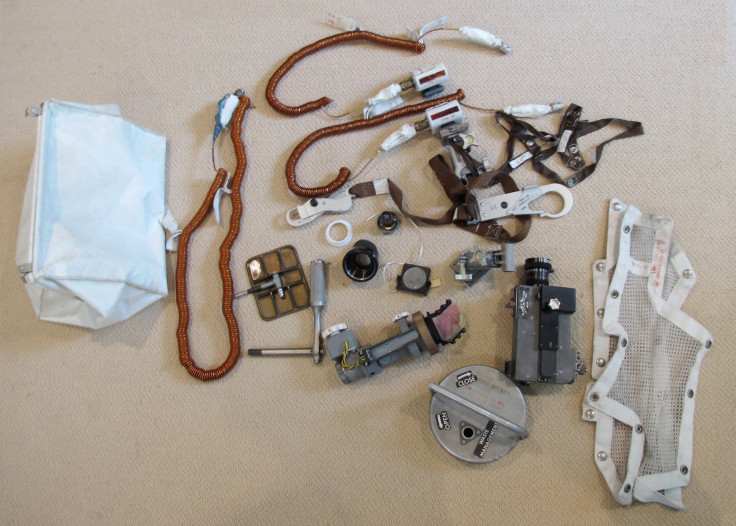Neil Armstrong’s Bag Of Artifacts From Apollo 11 Lunar Mission Discovered In His Closet

More than 40 years after the Apollo 11 mission landed on the moon, a cloth bag filled with small items brought back by Neil Armstrong, the first man to set foot on Earth’s natural satellite, has come to light. The bag, which was handed over to Smithsonian's National Air and Space Museum in Washington, D.C. by Armstrong’s widow, is said to have flown in the Lunar Module “Eagle” during the historic mission.
According Allan Needell, a curator at the museum, the bag was later recognized by experts as a McDivitt Purse, a special container -- officially called a Temporary Stowage Bag -- that was put in the Lunar Module during launch. Needell said that the objects inside the bag were examined by researchers at the Apollo Lunar Surface Journal (ALSJ), who had determined “with almost complete certainty” that all of the items were from the “Eagle.”
“Needless to say, for a curator of a collection of space artifacts, it is hard to imagine anything more exciting,” Needell wrote in a blog post, adding that the bag was found in one of Armstrong’s closets. The items “were assembled in the Temporary Stowage Bag and saved from the fate that awaited Eagle’s ascent stage and all of its contents: crashing into the lunar surface.”

The artifacts include a 16-mm movie camera, which was believed to have filmed Eagle’s descent to the moon and Armstrong's first steps on the lunar surface in 1969. According to Needell, the images taken by the camera are more detailed than the ones shown on television, The Associated Press (AP) reported.
The retrieved items also include one of two waist tethers provided in the lunar module for securing astronauts should they have to spacewalk from the Lunar Module back to the Command Module.
“We have determined that this tether was the one Neil Armstrong jerry-rigged to support his feet during the single rest period on the Moon,” Needell wrote. He also said that evidence that the artifacts were intentionally preserved in the bag is found in the mission transcripts as the items were referred by the Apollo 11 crew soon after Armstrong and Buzz Aldrin rejoined Michael Collins in lunar orbit.
“You know, that — that one’s just a bunch of trash that we want to take back — LM parts, odds and ends, and it won’t stay closed by itself. We’ll have to figure something out for it,” mission transcripts record Armstrong saying to Collins less than an hour before they were ready to jettison Eagle.
Although the museum had been informed about the bag in June 2013, the process of documenting the discovery concluded only recently, AP reported.
© Copyright IBTimes 2025. All rights reserved.






















